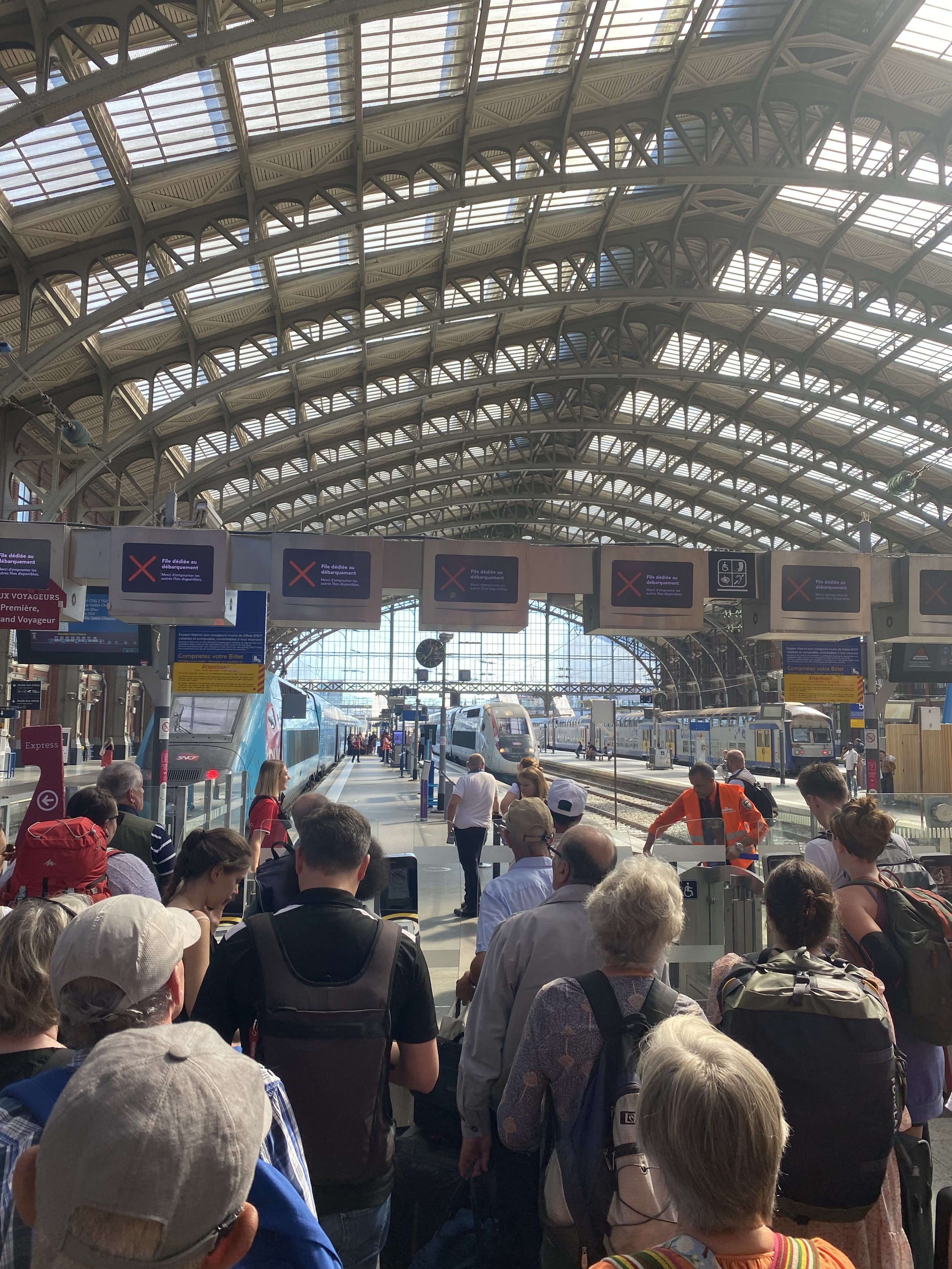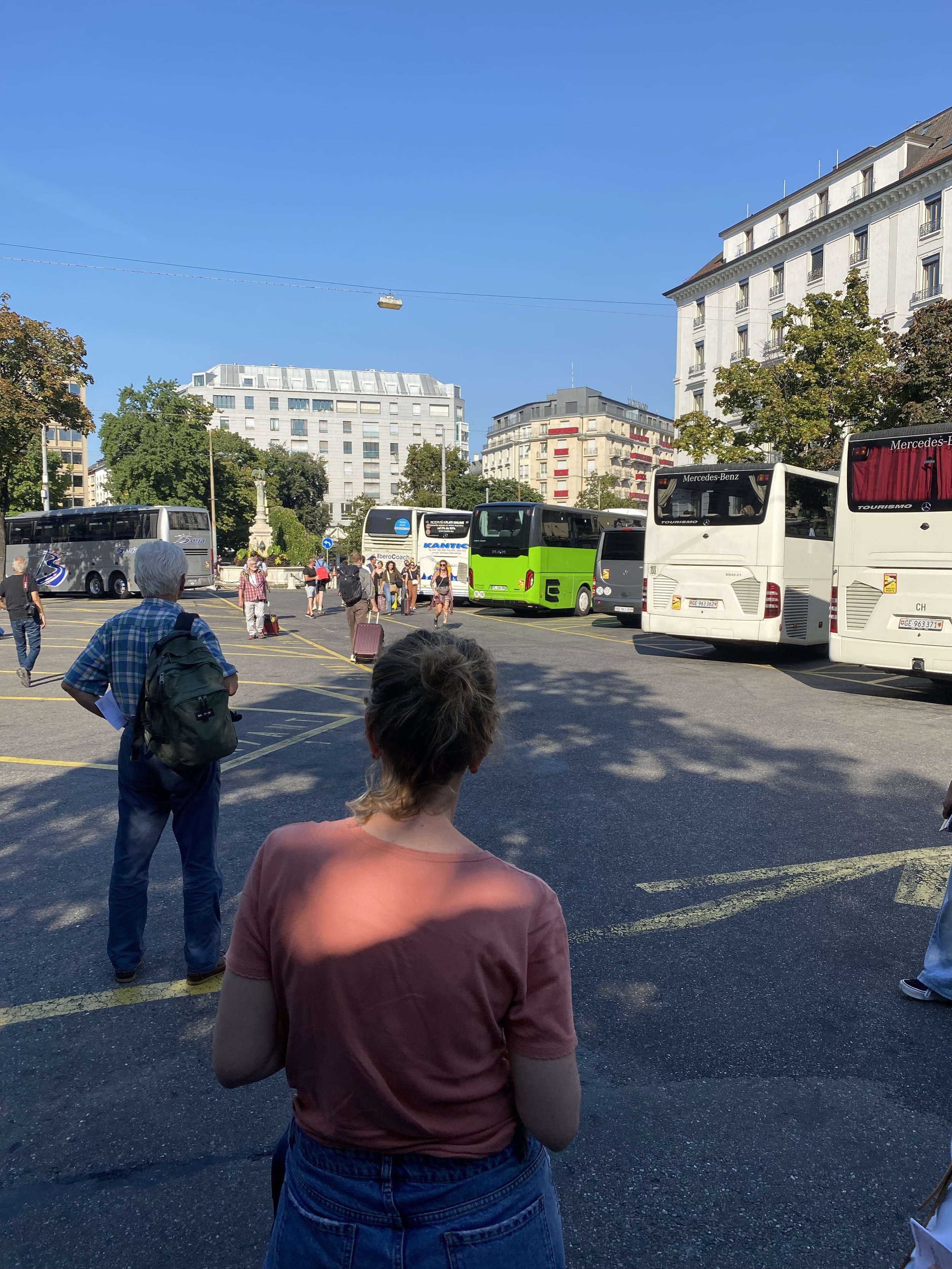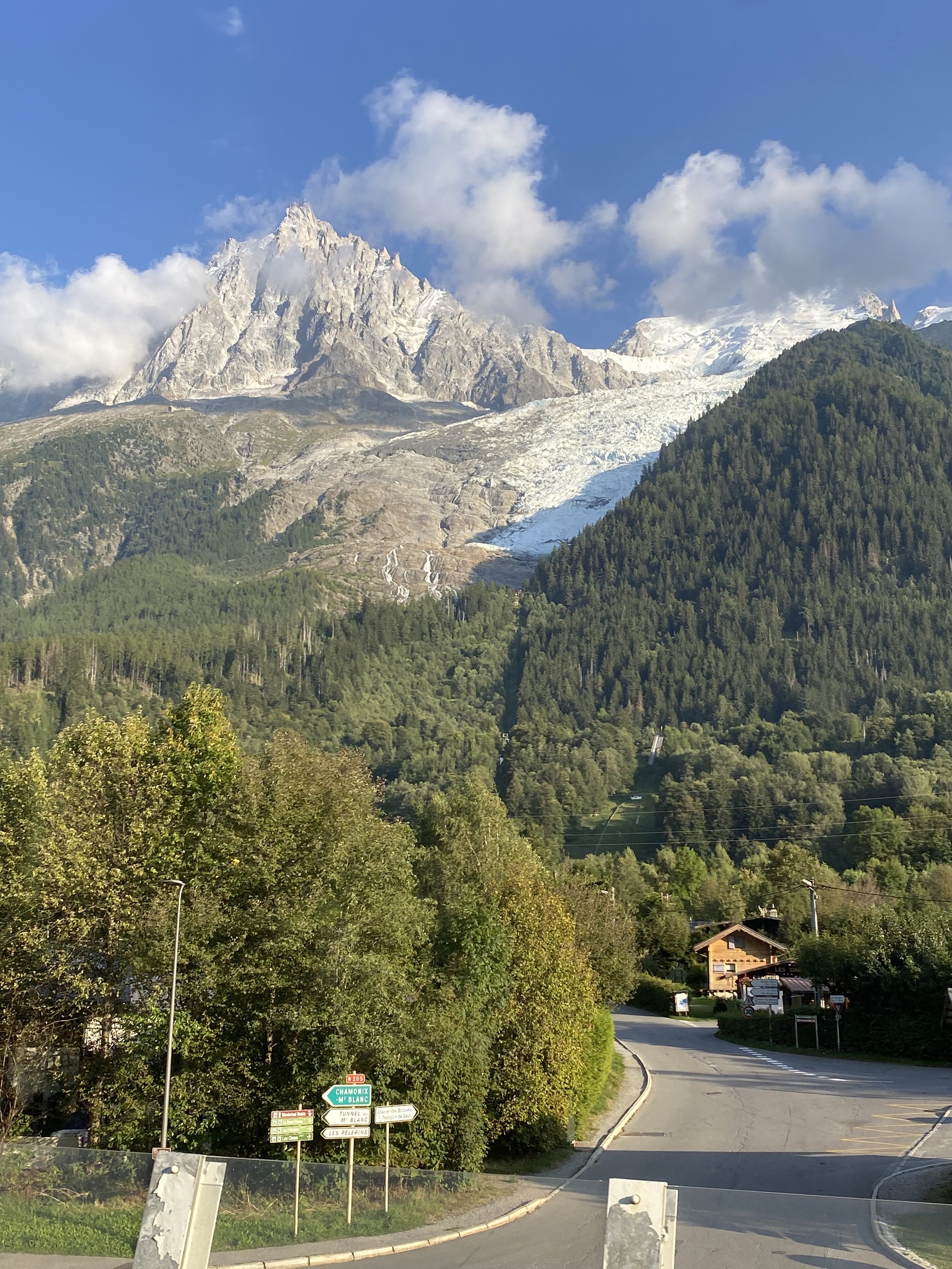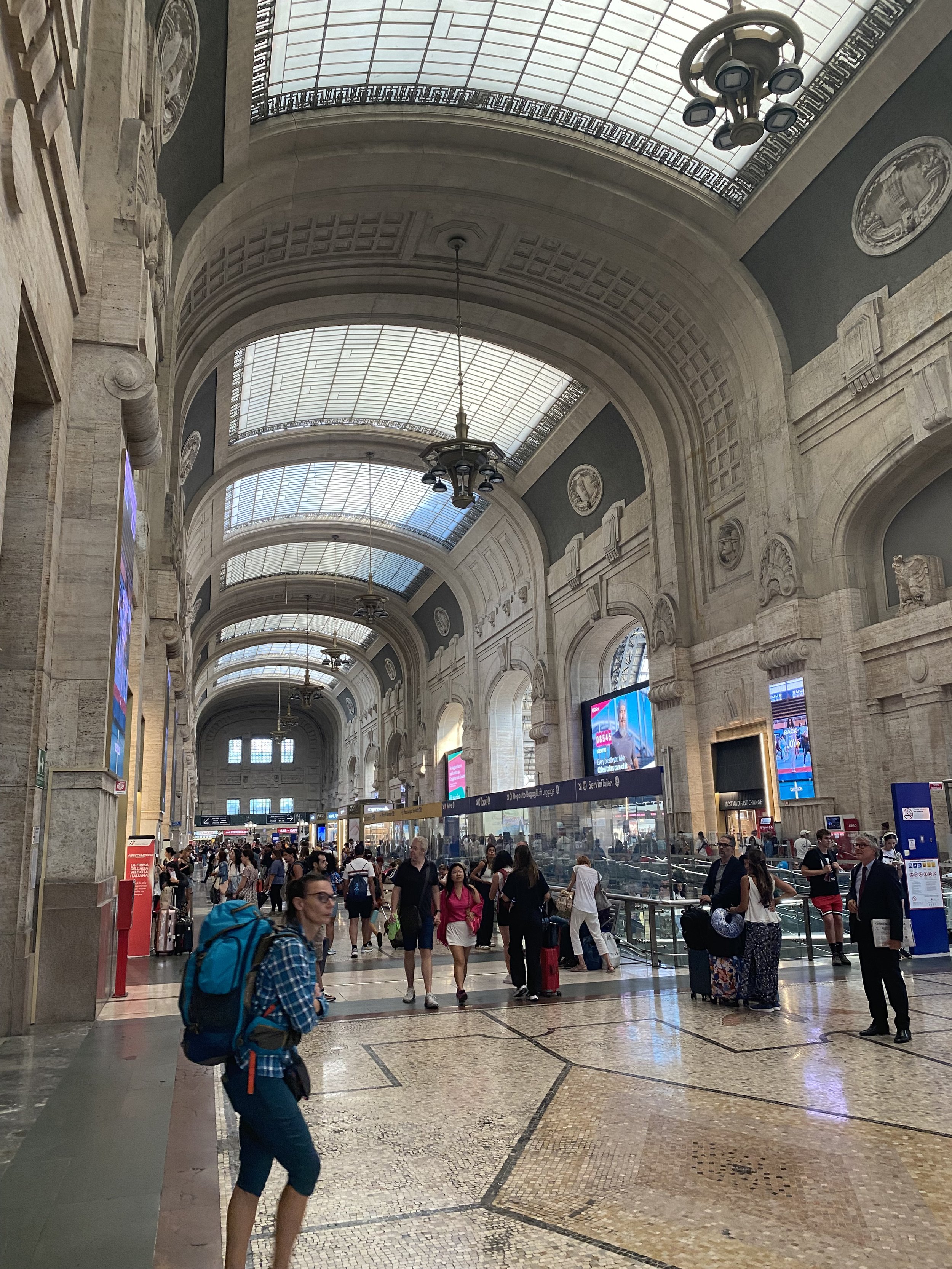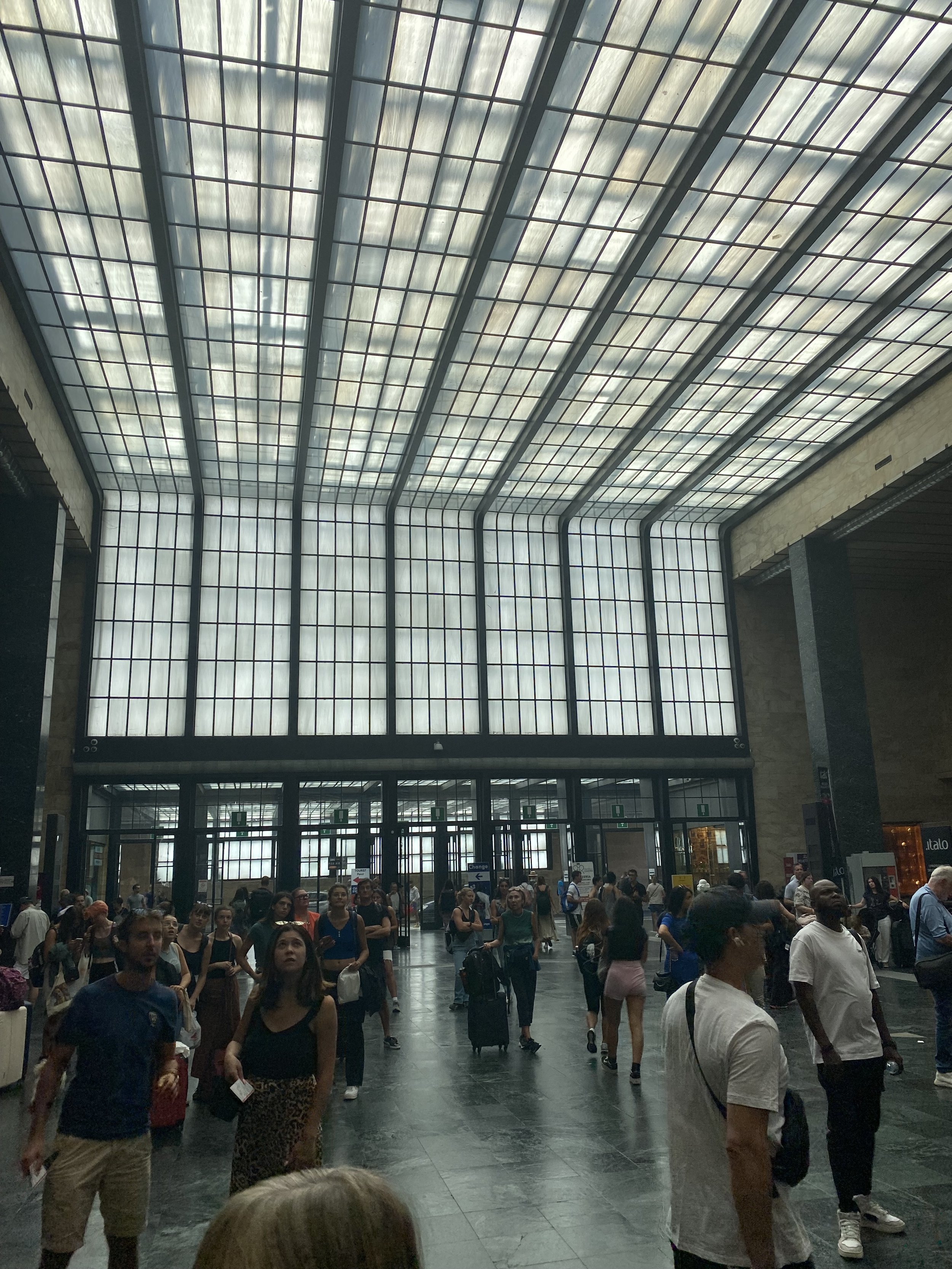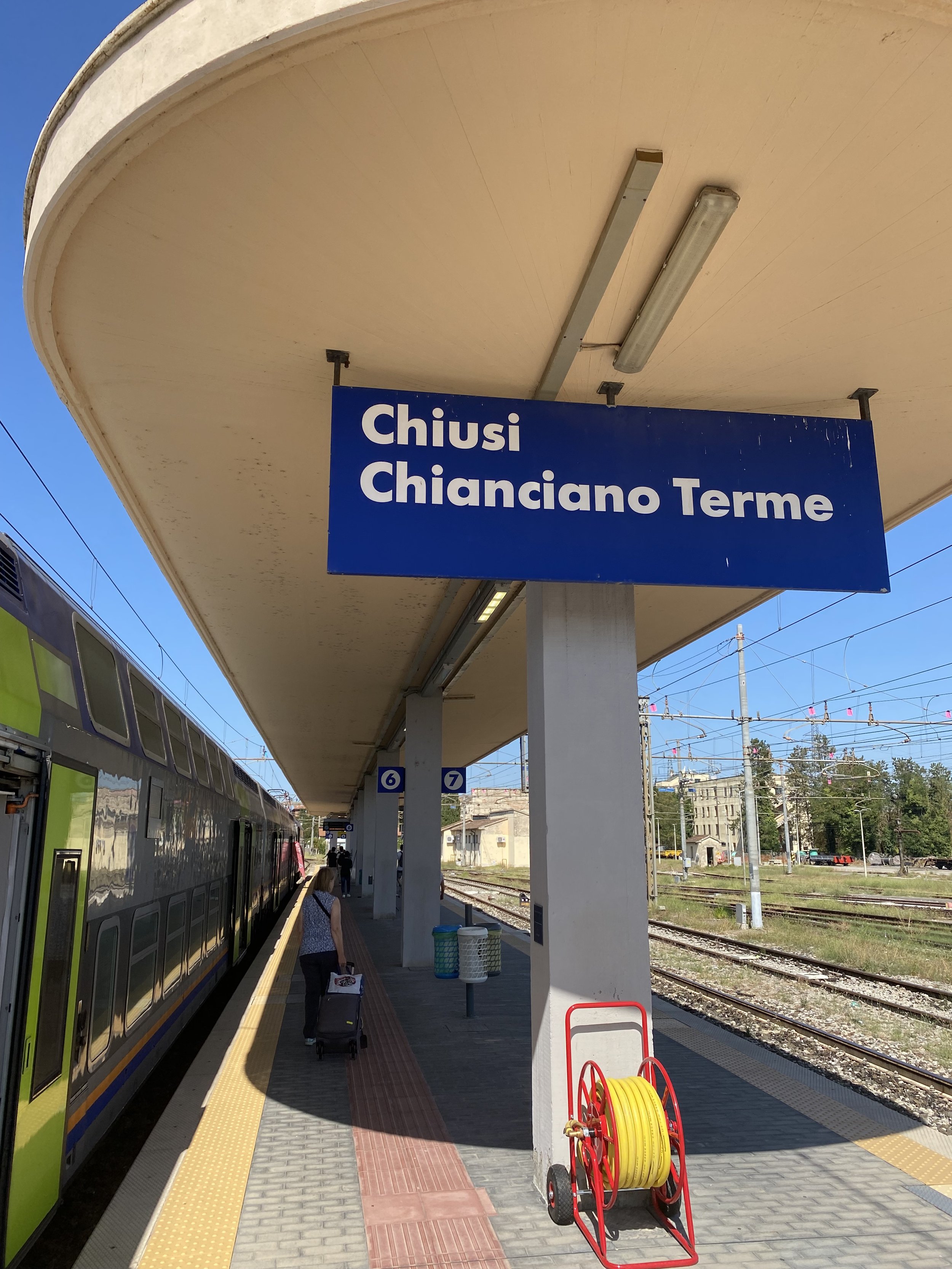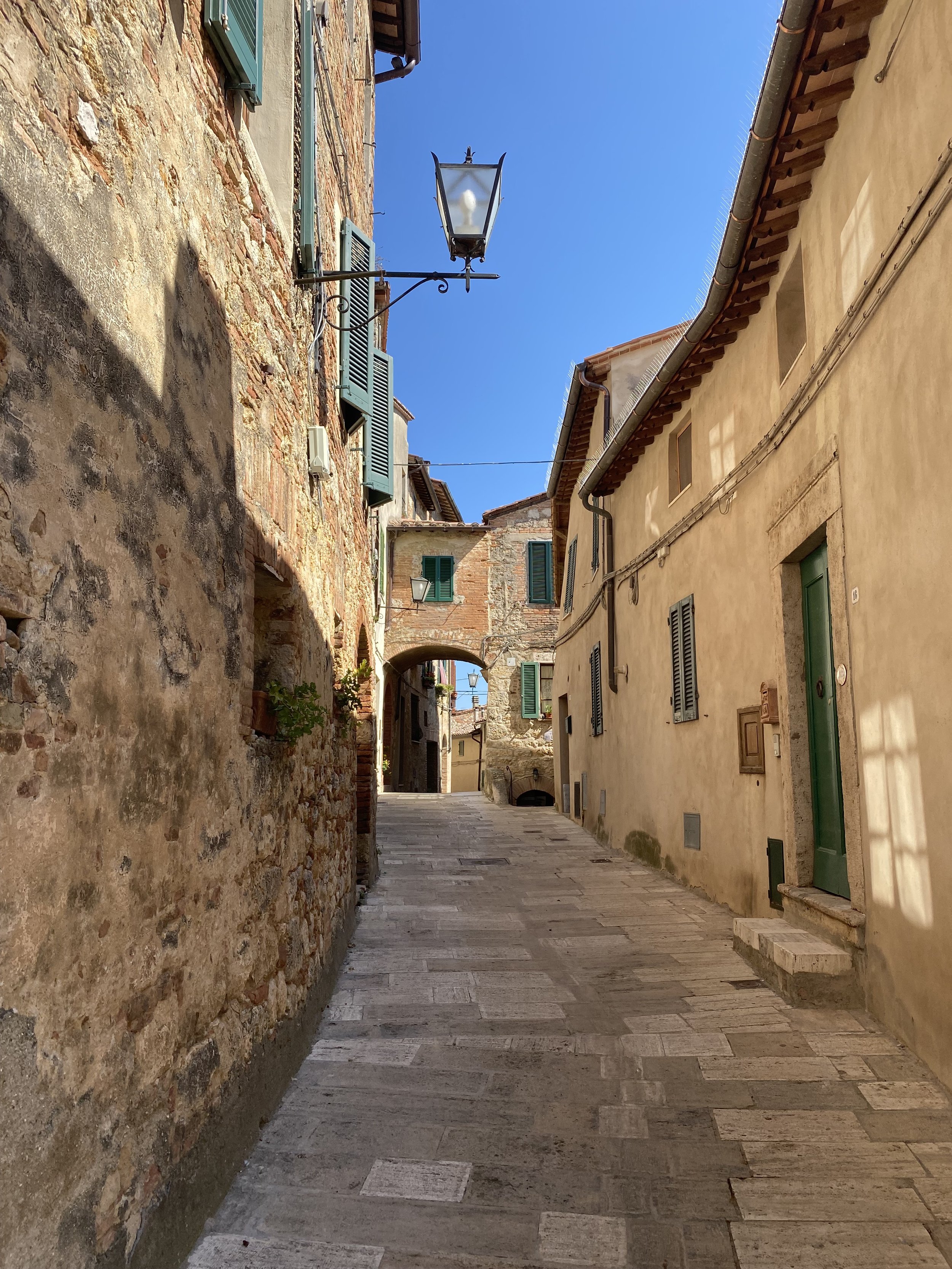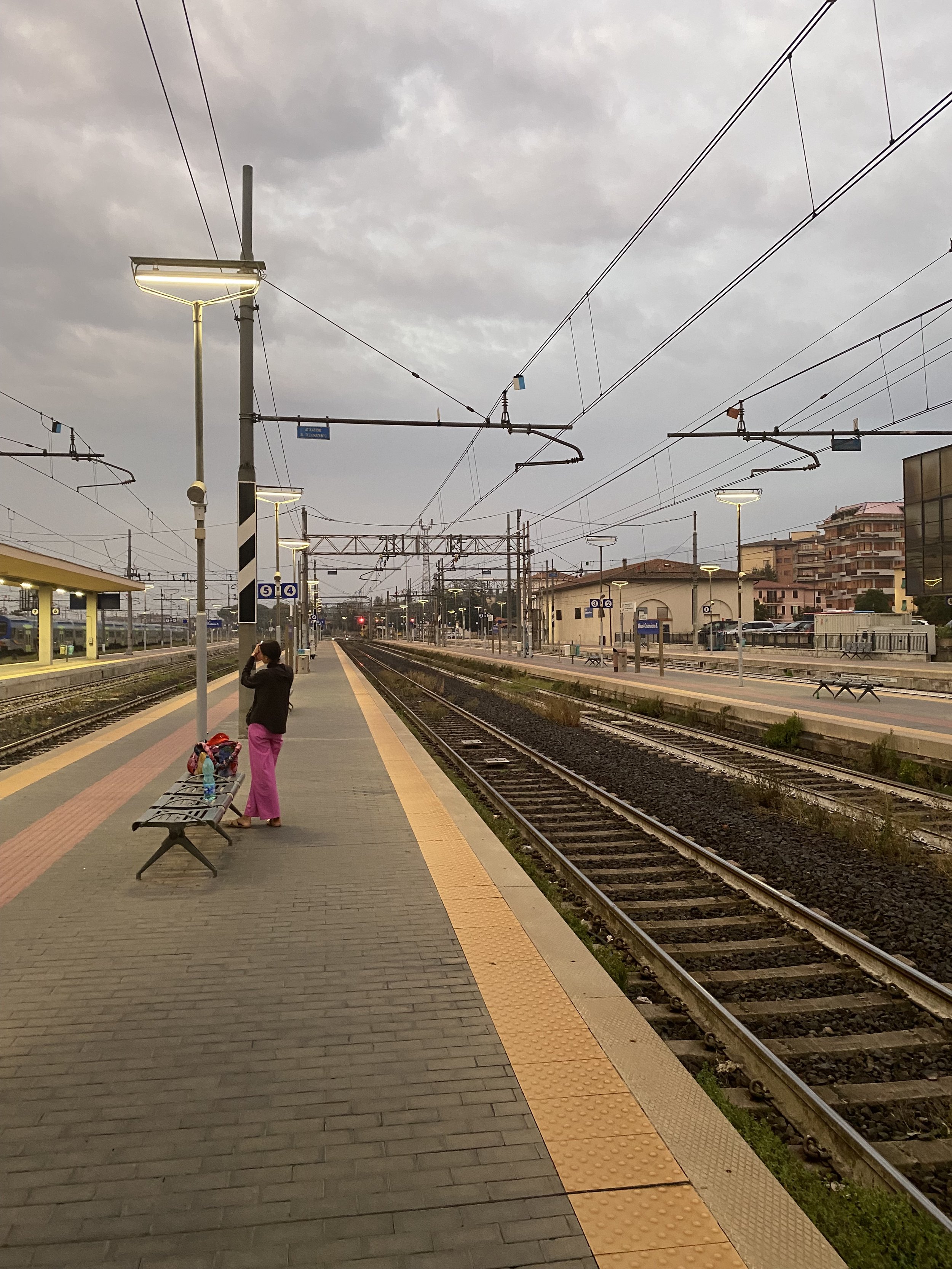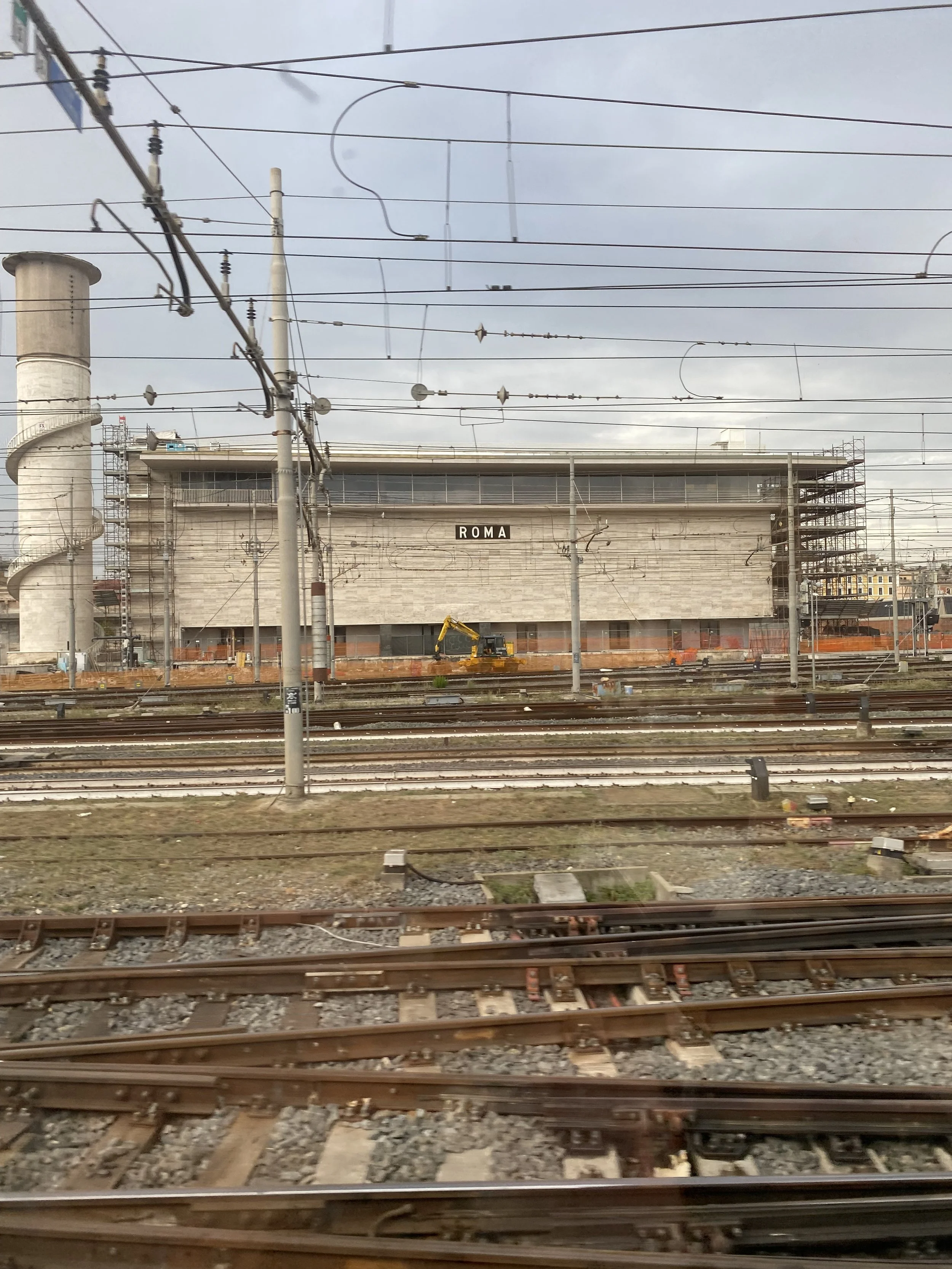THE WOMAN in the seat in front of us on the bus we had never intended to take was Asian - perhaps Filipina - middle-aged and dressed like a fashion buyer. She spoke softly in perfect Italian into her smart phone, which she charged from a USB port in the roof of the coach. At one point, she caught my eye and smiled.
We didn’t know it then, but within a few hours she would rescue us from a difficult and worrying situation.
We were travelling from Tunbridge Wells to Chiusi in Tuscany by train as a kind of adventure: St Pancras to Lille, Lille to Lyon, Lyon to Milan, Milan to Florence and then a local train to Chiusi. But as we emerged from the Channel tunnel into Belgium, our travel agent called to tell us that a landslide in the French alps had blocked the train line between Lyon and Milan. The only way out of Lyon was a bus that would take nine hours to travel from France through Switzerland, and with a change in Geneva, to arrive in Milan at around 9.50pm. With no real alternative, we booked what we jokingly called the longest replacement bus service in the world: a journey of nine hours through three countries.
It was annoying, because our train journey had been meticulously planned to limit the distance we would have to trundle our wheelie suitcases. Our room in the hotel in Lyon looked onto a railway platform: the one in Milan was within sight of the Mussolini-era’s impressive Milano Centrale Station. But the bus stations were nowhere near either hotel, and that meant we were going to have to hunt for taxis to get to where we needed to be.
The clock was ticking. We caught the Flix bus at Perrache in central Lyon without too much hassle, and the journey to Geneva was straightforward, even pleasant in an air-conditioned coach built for long distances. When we got to Geneva, though, the connecting bus was late. We stood in the heat for an hour before it showed. That meant we would arrive at Lampurgnano bus station five miles from our hotel at 11pm. But the arrival time began to look more like midnight when we got stuck at the notoriously sticky Mont Blanc tunnel for an hour.
There is an evolutionary purpose to anxiety: it prepares you for action. And as we sat on the stationary bus with snowy mountains looming over us in the sunshine, I began to fret about what would happen if there were no taxis around when we disembarked. The Milan Metro would still be running, but underground railways at midnight have issues of their own, and there would be many flights of stairs. There was a bus into the centre, according to the website Rome2Rio, but strangely it didn’t look as if it stopped at the bus station, and finding it might be a challenge. We would be vulnerable - two English pensioners with no Italian but with cases full of holiday cash and technology. My fallback plan was to ring the hotel and ask them to send a taxi to pick us up. That might work.
When we finally got to Lampurgnano, the bus station was crowded and there was no sign of a taxi anywhere. Dragging our cases behind us, we headed for a main road. It was then that I noticed the Asian woman from the bus, running a little way behind us with her own wheelie case. I stopped and said: “Taxi?” She said: “Si.” She spoke no English, and I spoke no Italian but with sign language I managed to suggest that we should go together in one taxi and share the fare, rather than competing for what was beginning to look like a rarity. She nodded, and I followed her out of the bus station.
A taxi appeared, heading for the rank at the bus station I’d guess, and our Asian angel virtually threw herself in front of it. In fluent Italian, she explained to the driver that we were going to different destinations and would split the fare. It was a surprisingly long journey. She was heading for a hotel in the edgy Navigli district, and at one point we drove down a street lined with hookers to get there. When we stopped, I pointed at the taxi’s meter and used two of the only Italian words I knew: “Per me.” The least I could do was pick up her tab. She put her hands together and bowed namaste style, and clambered out of the cab. From the front door of the hotel, she waved goodbye. We will probably never meet again.
Travel, especially complicated journeys like the one we were on, always throws up unexpected challenges. Once the challenge has been met, anxiety quickly fades - and we were glad to fall into bed in our posher-than-expected Milan hotel sometime after midnight. The next day, we got up early and found the train that would take us to Florence and on to the province of Siena.
At Chiusi, we were picked up by our host, who was celebrating his 70th birthday with a three-week party in a ten-bedroom Tuscan villa. The other guests in the week we stayed there included an aerobatic pilot, a Swedish sculptor (and shareholder in The Ice Hotel), the founder of a whale museum in Iceland (and UN Hero) and one of Iceland’s best-known photographers. There were four Icelanders, two Swedes, one Finn, a Costa Rican and a Colombian. Mealtimes were hilarious, and my resting heart rate dropped by 12 per cent over seven days. I could write an entire book about the people we met, they were marvellous.
The upsides of travelling by train are obvious: there is plenty of room (it’s like travelling business class on a plane), your bags stay with you, you can get up and move around and you can watch the landscape slip by while listening (in my case) to Tord Gustavsen’s jazz trio. If you have time, you can get out of the station and experience a city like Lille before jumping onto the next train.
The downsides are that: it’s more expensive than flying, especially when you take into account the three nights we chose to have in hotels, and you have to be reasonably fit to lug backpacks and cases up and down flights of stairs. Air conditioning might be an issue too: the carriage we were in on the Lille to Lyon leg of the journey had no air-con, and with an outside temperature of 32ºC it was like riding in a sauna. Fortunately, the train crew understood and moved us all into different and infinitely cooler carriages within half an hour.
Seat reservations were occasionally an issue. There were times when we found our booked seats occupied, and other times when someone laid claim to booked seats we were sitting in. It was a minor hassle, though, and amiably resolved in all cases.
The last leg, Chiusi to Rome and Rome to Leonardo da Vinci airport (for an EasyJet flight home) was a doddle, although it’s worth noting that one of our friends had a 24-hour delay at the airport just a few hours after we had taken off. And after navigating six major international rail hubs, I found the British stations at Gatwick and Redhill in Surrey surprisingly challenging.
Would I do it again? Certainly. If there hadn’t been a landslide in Savoie, the outward journey would have been as perfect as I had carefully planned it to be. And you get to meet new people: if you’re lucky, you might even get to meet an angel.
The images are: 1. St Pancras, London. 2. Lille station. 3. The bus station in Geneva. 4. Waiting at the Mont Blanc tunnel. 5. Milano Centrale Station. 6. Florence Station. 7. Chiusi. 8 and 9 Cetano near Chiusi 10. Chiusi station on the way to Rome. Main picture above: Roma station.

